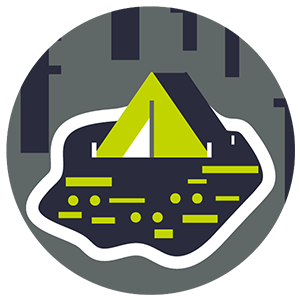Hot Spot
Lochsa Powell Ranger District 2019
Kooskia, ID

The Nez Perce-Clearwater National Forest consists of 4 million acres of beautiful and diverse mountain landscape in northern Idaho. The forest is known for being especially wild as nearly half of its acreage is designated as wilderness alongside three wild and scenic river systems. The area is a pre-eminent source of cultural and historical significance from the ancestral presence of numerous Native American tribes and subsequently being on the path of the Lewis and Clark expedition. In 2018, over 200,000 visitors stopped by the Lolo Pass Visitor Center and this number is likely to continue to increase in the coming years. Many of these visitors are accessing the hot springs and other areas within the forest. Though the impacts are currently noticeable and affecting the natural resource the forest is at a good point to approach the issues. The forest is ahead of the curve in dealing with these impacts and setting the sites up for sustainable use in the future with Leave No Trace implementation. While the types of impacts have remained the same over time, their severity has been steadily increasing as these areas become more well known and attract more visitors. For example, Weir hot springs had 13 new campsites built up the creek from the main pool since the last site assessment. In response to increased impacts, Jerry Johnson was converted to a day use only area and LEO presence at the sites have been increased. A dumpster was also added to the Jerry Johnson parking area during the summer months. Since then, the trash issues at Jerry Johnson have decreased while the dumpster is provided, but the problem arises again when it is taken out in the off season. Even when the dumpsters and facilities are in place the impacts still occur on site.
Solution
- 240 Adults & 120 Youth Educated
- 152 Volunteer Hours Facilitated
- 15 Educational Programs Hosted
During the Hot Spot activation week, we led 15 educational and stewardship-focused programs across the region from Missoula to Kooskia. These targeted programs helped to educate and build up Leave No Trace awareness, stewardship practices, and effective communication for USFS staff and volunteers, young students at a local school, students from University of Montana, University of Idaho, and Washington State University, and other local stakeholders and community members. Through these programs and service projects, the Traveling Trainers and stakeholder groups were able to highlight future opportunities to implement Leave No Trace across the forest and surrounding communities and build upon already significant enthusiasm.
Your donation helps bring Leave No Trace solutions to these impacted areas.
Related Blog Posts
Let’s protect and enjoy our natural world together
Get the latest in Leave No Trace eNews in your inbox so you can stay informed and involved.





